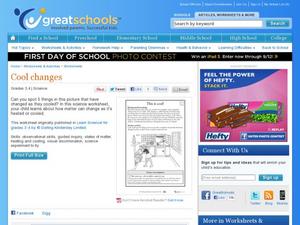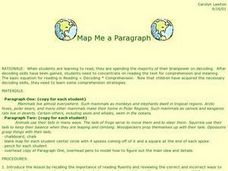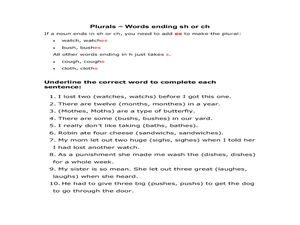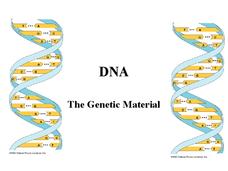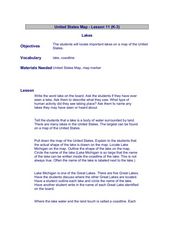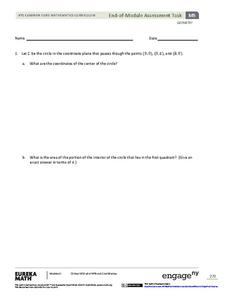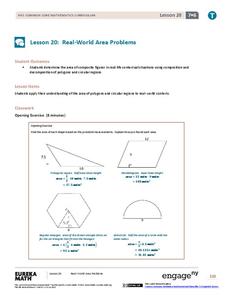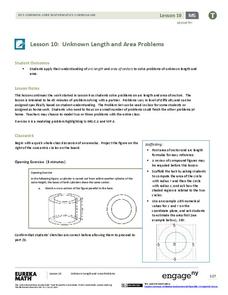Curated OER
Weight: Heavy or Light Worksheet
Which is heavier, a ladybug or a ship? Learners will have fun with this weight comparison worksheet, that uses visuals to help them determine which is heavier or lighter. They complete two comparisons for each. Lastly, they examine four...
Curated OER
This is Cool!
Third and fourth graders who are studying states of matter will enjoy this simple exercise. In it, they look at a picture of a girl in her kitchen, and they must circle five examples of materials that have changed states of matter as...
Curated OER
Map Me a Paragraph
There are so many great reading strategies. In this lesson, learners practice decoding. They break down two paragraphs to analyze and determine main ideas and details. They each observes ways to model as they map their paragraphs.
Curated OER
Abstract Nouns
In two similar worksheets contained in this resource, learners circle the abstract noun contained in 13 or 14 sentences. Unfortunately, an example given is "courageous," which is an adjective. This is a resource for home schooling, but...
Curated OER
Plurals: Words Ending -sh or -ch
The worksheet starts with a brief explanation about adding -es to pluralize nouns that end in -sh or -ch, and adding -s to other nouns. Then your learners circle the correctly spelled plural version of a noun in 10 example...
Curated OER
Animals Word Search Puzzle
To make the classic word search more challenging and academic, this animal-terms puzzle has scholars solving clues to determine the words they find. Fifteen clues give detailed definitions of biology terms such as carnivore, reptile,...
Curated OER
Getting Hooked, Introduction for a Narrative
How can you interest your reader? Here is a great lesson on reading and discussing the characteristics of a narrative. Elementary schoolers explore writing techniques to hook the reader. They identify their hook and share their...
Curated OER
DNA
The question of the structure and function of DNA being the same in almost all organisms is raised here. You will find this PowerPoint a great summary of the building blocks and replication of DNA. The differences between...
Curated OER
Ancient China
Unveil the mysteries of ancient China in this presentation, which includes photographs of historic relics from the Neolithic and Bronze Ages. Slides detail the Hsia, Shang, and Zhou Dynasties; especially helpful is the final slide, which...
Curated OER
Grids
This fun presentation includes instructions for a grid game, where the child must follow directions to uncover the hidden treasure. They make Mr. Smiley move up, down, right, and left on the grid until he's reached the...
Curated OER
In The Shadow of the Pines: Sugar Cane Time
This resource provides a short reading passage, an excerpt from In The Shadow of the Pines by Karen K. Newell, about a family and their sugar cane harvest during the Great Depression. After the reading, there are four multiple choice...
Curated OER
Biosphere
There is so much to learn about the different cycles, processes, and parts of the biosphere. Using a pretest as a formative assessment to see what your budding ecologists already know is a great way to figure out which important areas...
Novelinks
Roll of Thunder, Hear My Cry: Concept/Vocab Analysis
Considering using Roll of Thunder, Hear My Cry for book circles or whole-class study? First time teachers, and those who have used the text before, will find some interesting tidbits in this overview.
Curated OER
Pronoun Reference
The kids in your class will have so much fun completing this grammar worksheet (maybe). They must determining whether each of 20 sentences contain pronoun atecedent errors or not. When they locate an error they must correct it. Editing...
Math Worksheets Land
Comparing Fraction and Equivalence
Which ones are equivalent? Scholars examine four fraction models to determine which ones represent the same fraction. This is a great way to help kids with numerators and denominators, as they can physically count the total number of...
Curated OER
Presenting Information
How do you make a pizza? Scholars examine a recipe for one of their favorite dishes. After reading the eight steps, they must re-write the steps in order. Although this offers great printing practice, younger writers may find the narrow...
Curated OER
United States Map - Lesson 11
Students explore lakes of the United States. In this geography lesson, students identify noteworthy lakes on a map of the United States.
Curated OER
Circle of Life
Students consider why we eat and where our food obtains its energy. They illustrate food chains that might be found on an open field, dissect owl pellets, identify the remains of animals in the pellets, watch videos and participate in...
Curated OER
Sunflowers, The Circle of Life
Learners investigate and observe plants and animals in nature. They find out how life cycles are present in much of nature. Students use appropriate graphic organizers for information gathering. Learners use sequence life cycles of...
Curated OER
Circles in the Landscape: Irrigating Oklahoma Crops
How do you grow crops in a area with insufficient rainfall? Why you irrigate, of course. Class members investigate irrigation systems by designing a system of their own. After examining irrigation related concepts, vocabulary terms, and...
Curated OER
Greatness of Love
Seventh graders study encouragement and love toward others. In this bible lesson, 7th graders discuss practical ways people can show love to others. Students also recognize agape love as the highest form of loving expression as shown by...
EngageNY
Geometry Module 5: End-of-Module Assessment
The lessons are complete. Learners take an end-of-module assessment in the last installment of a 23-part module. Questions contain multiple parts, each assessing different aspects of the module.
EngageNY
Real-World Area Problems
Not all structures take the shape of a polygon. The 21st lesson in a series of 29 shows young mathematicians they can create polygons out of composite shapes. Once they deconstruct the structures, they find the area of the composite figure.
EngageNY
Unknown Length and Area Problems
What is an annulus? Pupils first learn about how to create an annulus, then consider how to find the area of such shapes. They then complete a problem set on arc length and areas of sectors.

